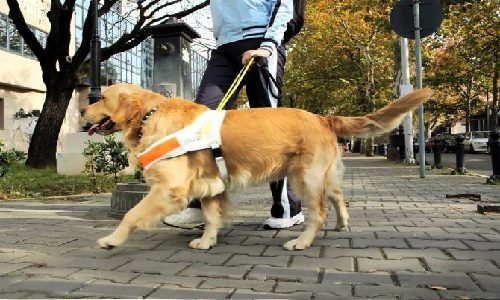Guide dog or assistance dog
The guide dog or also called assistance dog is a dog trained to guide people with visual disabilities helping them to move around and in household chores. These guide dogs have existed for more than a century and are also known as guide dogs.
Indice

This type of dogs are trained in such a way that they can warn blind people of obstacles or barriers that may be presented on the road, they can also distinguish between red and green colors to interpret traffic light signals.
It must be taken into account that these are not just pets. They are companion animals and their great intelligence allows them to become the eyes of the visually impaired.
History of guide dogs
Among the first incursions made with guide dogs were breeds such as the German Shepherd. After some time they noticed that the Labrador and the Golden Retriever would be much more docile and intelligent animals to become guide dogs.
Actually, what we now call assistance dogs began to be trained more or less 100 years ago because of the large number of German soldiers who were blinded during the First World War.
It was not until 1916 that an experimental school was opened in Germany for the first time, dedicated to the training of dogs that could guide soldiers who were left with severe visual impairment.
Guide dog characteristics
The education of a guide dog starts from 7 weeks to 12 months or even up to 24 months. Generally we work with breeds such as Labradors, as they are breeds that have characteristics and adaptability to the environment and adapt easily to difficult situations. Golden Retrievers are also used because of their sensitivity and intelligence.
Training a guide dog
It is no easy task to educate a dog to become a guide dog. In fact, there are specialized schools that work with these types of dogs for months so that they can be delivered to the owners who require them.
The training consists in a simplified way of introducing them to the placement of the harness, making them responsible for the person they will guide, learning to cross the street in a straight line and avoiding obstacles or any architectural element that could trip the blind person.
Upon completion of the training, the facilitator determines readiness based on a number of determining characteristics which are sought by the applicants for the guide dogs.
Image courtesy of www.escuelapedia.com, all rights reserved.







